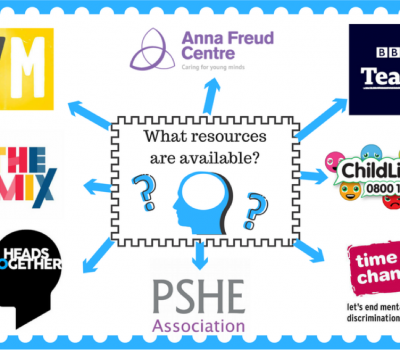

You know how you live with the fact that you are not educating kids like they used to be educated? How young people today cannot read or write and leave school with a poor or inappropriate skills and how employers are concerned? Apparently, everyone knows, politicians, employers, everyone, except teachers.

I have been aware of such opinion ever since starting teaching 35 years ago. Apart from suggesting that those who insist that education is failing, were the inadequate youngsters referred to in the criticisms made in my earlier years, I am confused because the evidence I see around me does not support this. There have been changes over the last thirty years that suggest education has been successful in providing capable consumers. The evidence for this is so obvious that I do not understand why it is never referenced.
When I was young newsagent’s magazine racks had perhaps 70 publications. Today, the magazine racks in Tesco have two hundred different titles. This must mean that folk buy more magazines? I remember when taking my English ‘A’ level my tutor issued a book list. When I asked where I might buy them he remarked, “Smiths used to be a book shop”. Now Smiths has not only recovered its former identity it also competes with other bookshops. Finding somewhere to buy Macbeth would not be as difficult. Books are better business now and that means that more are read, surely? Is it true that over the last years the amount of reading material sold has increased?
When I visit B&Q I find racks of power tools. How does anyone learn what to do with a router? The router is a specialised piece of equipment. Not only can they be tricky to set up and operate they also take some figuring out to determine when it is appropriate to use. No children get taught how to use a router. If you wanted to buy a router years ago then you might find one in a DIY store. If you wanted the real McCoy you would go to a specialist supplier. Today, in B&Q, you might find eight or more different models of router ranging from the cheap to the seemingly nuclear powered.
When I was training to become an Art teacher I was seduced into CDT by the RSA’s Education for Capability Scheme. When I became a CDT teacher I joined a band of brothers and sisters with a mission to fill the world with people who possessed the confidence to address practical problems. Did we do it? Sometimes I fancy that we just might have. When I watch DIY programmes I cannot help but note that many of the designers and carpenters that present them are likely to be of an age to be in receipt of the capability centred initiatives of the early 80’s.
One more store to visit, PC World and I look for network routers and find a range of different manufacturers and specifications. Hold on…
“The router is a specialised piece of equipment. Not only can they be tricky to set up and operate they also take some figuring out to determine when it is appropriate to use. No children get taught how to use a router. “
How have folk come to know how to use a router? There are no TV programmes suggesting how they might ‘make-over’ their computers and they will not have received instruction on what this technology can do for them. Yet PC World has aisles of brand new technological gizmos, cables and internal gadgetry that is flying off the shelves.

Although D&T departments may be able to claim a contribution to the success of the DIY market, I am not so sure about how ICT/IT/Computing in schools may be contributing to empowering the population. Notice how computer sales and the popularity of the internet have more than held their own without technical concepts being taught? With no great emphasis on pupil centred emphasis as seen in D&T schools have only recently returned to Computing after years relying on the ICT “copy this spreadsheet” paradigm where computer-based subjects have worked their way through lists of skills.
I do not suggest that ICT or Computing should not take its own share of the responsibility for developing capability. It is vital that computer-based subjects clearly own their territory. There is however, a large proportion of the population doing nicely who have never had the stimulus to take them beyond the background learning they are naturally acquiring. If that is not ICT/Computing’s territory then what is?
When we were transforming D&T we took comfort in teachers who had an implicit understanding of its value. We see that the rewards for this effort are now evident in society. Having moved from D&T to ICT to continue with the ‘mission’ to promote child centred learning, I cannot spot the required debate and am surprised at how uncommon debate about the ‘vision’ of ICT or Computing in a holistic sense is. D&T also has its lists of skills, before the National Curriculum we spent a lot of time listing and ordering them to understand progressions. We did that to identify commonality, essentiality and difficulty to anticipate learning routes for pupils on their own personal journeys. Skills were required to achieve successful outcomes but did not need to be mastered for pupils to grow. What guided growth was the ubiquitous “Design Process”, a map for every activity and perhaps, if we can claim influence on capability, the most successful metacognitive tool of recent years.
Computing and ICT deserves its own place in shaping our pupils. Without its own metacognitive framework I do wonder if it will ever rise beyond a debate over demarcation. Without such a framework I wonder if I’ll be told by someone one day that “kids can’t use computers these days”? Oh, wait, I already did!
You must be logged in to post a comment.
Very good article. Computing does of course have its own meta cognitive framework which is systems analysis, but
This process is very poorly situated in the PoS
The massive overemphasis on coding at the expense of problem solving. So kids can code? So what?
Hi Tim. Thanks for the comment, I’m glad you enjoyed the article. You are right about the systems analysis as a guiding metacognitive tool. In fact I think it describes a specialized use of the dressing process and potentially just as integral to computing as the design process is to Design and Technology. Why it is not recognized in the current curriculum is a complete mystery to me.
Hi Laurence – what an excellent read! I’m one of those bods who trained as Design & Technology teacher 35 years ago (Middx Poly, 4 yr B.Ed) having sat O-Level and A-Level DT (not CDT) at my international school in Hong Kong. We also did computing then too (on ‘Apricots’ – Apple Mac rip-off machines 🙂 ).
You are so right; The UK championed DT education and it spread like wildfire globally during the 80’s/90’s/00;s with a robust phiosophy and support mechanism(s) for teachers. It was a gloabl phenomenon and ‘we’ led creative and academic Design education globally. My own ICT ‘skills’ came from using the technology in support of Design education, leading me to champion digital strategy across a network of schools globally whilst still leading on Design education.
Now, in my current role, I can support and champion colleagues as we invest in Design education and make ICT a core requirement of all teachers (not pegged to period 3&4 on a Thursday in room 101). As Tim says – why teach kids to code? I did it at school in the 70’s…became G-Codes on CNC machines but now computer algorithms develop most code (rightly or wrongly).
Design Technology is the fastest growing ‘science’ (sic) in the Group 4 sciences of the International Baccalaureate Diploma programme (over and above Physics, Bio and Chem). Why? It applies Science, Art, Business acumen and anthropology (social history). Students still need to model and prototype their ideas in textiles, wood, metals, composites, plastics, food etc…plus they know how to use a router, do a CAD drawing and how to sketch with a pencil on paper in perspective. Then sell their idea to a client.
Design education. Can’t be beat. Why has the UK allowed it to go into decline with all this STEM nonsense?